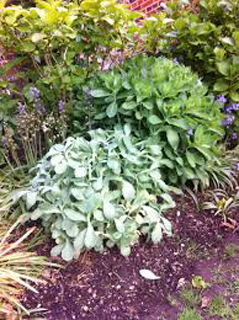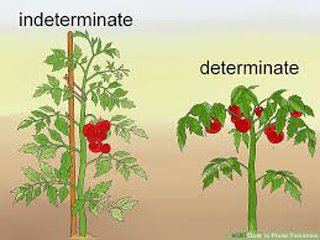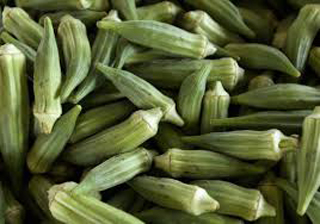 As the old song goes, June is bustin’ out all over, and that’s not just a comment on some people’s wardrobe choices!
As the old song goes, June is bustin’ out all over, and that’s not just a comment on some people’s wardrobe choices!
Looking back at last month’s column, we were marvelling at the positive effect the wet winter and cold snap has had on our fruit and ornamental trees. Leaving aside the herbaceous we lost altogether because they are marginal even down here (stuff that won’t tolerate a frost or damp feet at all), the same is now evident of our herbaceous perennials.
The phrase “what doesn’t kill you makes you stronger” comes to mind, as our herbaceous perennials are clumping up like no one’s business. You can still divide for a tiny while longer, but get to it, because the window is closing quickly – it’ll be too warm soon for things to establish easily without loss.
And given we have just past that landmark of the year, the RHS Chelsea Flower Show, the vigour our herbaceous is showing certainly should be making you think about a Chelsea chop for some of your plants. This has 2 roles. One is to control the height of the plant, (which at the rate things seem to be growing may cause flopping issues before long if left unchecked) and create a bushier plant.
 The other is to stagger flowering, as the chopped plant, or part of the plant if you choose to do it that way, will flower later. As you will see from the picture, sedum (or hylotelephium as we are supposed to call the taller varieties now, yawn) is the perfect candidate. Firstly, it is a right old flopper if left to its own devices, and can look very messy. Also, it is the ideal late summer fodder for our bees and other nectar loving insects, so the longer we can prolong its flowering season, the better. Look around your garden in late September/October and we guarantee you the sedum will be coated in bees. Everyone wins from that particular chop.
The other is to stagger flowering, as the chopped plant, or part of the plant if you choose to do it that way, will flower later. As you will see from the picture, sedum (or hylotelephium as we are supposed to call the taller varieties now, yawn) is the perfect candidate. Firstly, it is a right old flopper if left to its own devices, and can look very messy. Also, it is the ideal late summer fodder for our bees and other nectar loving insects, so the longer we can prolong its flowering season, the better. Look around your garden in late September/October and we guarantee you the sedum will be coated in bees. Everyone wins from that particular chop.
By the way, did anyone else think there was way too much concrete at Chelsea this year? We realise the big show gardens are exhibition pieces but let’s see skill with the plants, not hard grey stuff.
Last month, we also talked about the speed with which veg plants and bedding plants are flying through the tills, ours included. Multiply that by 2 at least now. We have never seen it so busy. We are reliably informed that the local outlet of one large chain of garden centres has run out altogether for numerous reasons, which is great for us, but not for the consumer. So, don’t dillydally for your summer veg and bedding or you will be disappointed for sure. It’s warm enough now to risk planting it up outside, and if anything, if this dry spell continues, we could be watering like mad instead!!
Our tomatoes are growing apace under cover so now is the time to make sure you get the best out of them. First, ensure they have proper support. Tempting as it is to think “the plant’s not that big yet, I’ve got time” it is far more difficult to chase it once it’s bigger than to set up the correct support now. Cherry tomatoes are straightforward, as the fruit doesn’t get too heavy, but make sure it is sturdy if you are growing big Berthas of tomatoes, which will break the plant if the fruiting stems are left to droop.
Work out which type of tomato you have – determinate or indeterminate. The term relates to the expected height and form of the plant you have, and in turn, tells you how to deal with it.
 Most tomatoes are indeterminate – unless the label says otherwise, assume this is the case. For indeterminate (i.e. those who will continue to grow to an indeterminate height unless they are stopped in some way) you need to pinch out the side shoots that emerge in the joint between the leaf and the main stem. Once your plant has set 5-6 trusses of fruit, then pinch out the main stem, so the plant can concentrate on fruit production and ripening.
Most tomatoes are indeterminate – unless the label says otherwise, assume this is the case. For indeterminate (i.e. those who will continue to grow to an indeterminate height unless they are stopped in some way) you need to pinch out the side shoots that emerge in the joint between the leaf and the main stem. Once your plant has set 5-6 trusses of fruit, then pinch out the main stem, so the plant can concentrate on fruit production and ripening.
Determinate plants are those that will form a bush shape all on their own without our help, and therefore need no pinching out or pruning. The label will say if it is a bush. Tumbling tomatoes also fall into this category.
In both cases, start to feed weekly once fruit has started to set, and keep well watered. Inconsistent watering can lead to blossom end rot or cat face, where the tomatoes mutate.
 If you want to try growing tomatoes, but have access to no greenhouse or polytunnel, and you can’t find a tomato bred for outdoor growing, your best chance of success is to try a cherry tomato, as these take less time to mature and ripen. Put the plants in the most sunny, sheltered spot you can find and feed as mentioned above. And good luck! It may not make economic sense, but there is nothing like growing your own.
If you want to try growing tomatoes, but have access to no greenhouse or polytunnel, and you can’t find a tomato bred for outdoor growing, your best chance of success is to try a cherry tomato, as these take less time to mature and ripen. Put the plants in the most sunny, sheltered spot you can find and feed as mentioned above. And good luck! It may not make economic sense, but there is nothing like growing your own.
 We’re also going in for a little experimentation this year, and trying sweet potato for the first time. Not a potato at all in fact, so not grown from a tuber, but from slips – small rooted plantlets.
We’re also going in for a little experimentation this year, and trying sweet potato for the first time. Not a potato at all in fact, so not grown from a tuber, but from slips – small rooted plantlets.
It is in fact a member of the bindweed family, which becomes obvious when you see the plant, and climbs. It needs warmth and moisture, so probably best under cover. What with that, chillies, aubergine and peppers already in production and a neighbour growing okra for the first time, the Roseland and Pengelly could become quite an exotic corner of Cornwall! We’ll let you know how we get on!
Sarah Daniel and Helen Robins, Pengelly Garden Centre
www.pengellygardencentre.co.uk

